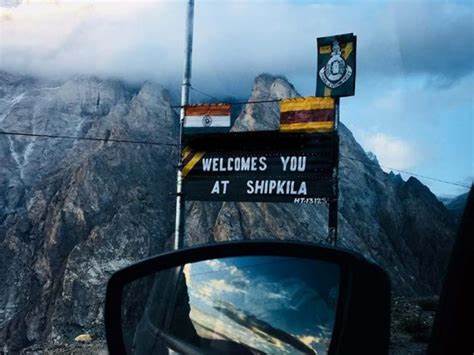
Photo Source: vargiskhan.com
In a historic and strategic move, the Himachal Pradesh government has opened the ancient Shipki La Pass in Kinnaur district to Indian tourists for the first time since independence. Located at an altitude of approximately 3,930 meters on the India–Tibet border, Shipki La has long been a symbol of traditional Indo-Tibetan trade and cultural ties. Its reopening marks a significant step toward promoting border tourism, strengthening local economies, and reviving heritage routes that were once vibrant with spiritual and commercial exchanges.
Historically, Shipki La served as a crucial part of the Silk Route, allowing traders from India to exchange goods like wool, salt, and dry fruits with their Tibetan counterparts for essentials like rice, barley, and textiles. However, following the Sino-Indian War of 1962 and heightened border tensions, access to the pass was closed off for civilians. In recent decades, only defense personnel and border security forces had been permitted to operate near the region, making this public opening a moment of both symbolic and practical importance.

Announcing the decision, Chief Minister Sukhvinder Singh Sukhu emphasized that opening Shipki La to Indian nationals would boost tourism and connect the remote, high-altitude villages of Kinnaur with the broader development efforts of the state. He also proposed to the Central Government that Shipki La be considered as an alternative route for the Kailash Mansarovar Yatra, calling it geographically shorter and more feasible than existing routes through Lipulekh in Uttarakhand and Nathula in Sikkim. The CM further stated that all necessary security protocols would remain in place, with the ITBP and Army overseeing regulated access to the sensitive border region.
Tourists looking to visit Shipki La will need to carry a valid Aadhaar card as identification. Initially, this is the only document required, although local verification or prior permission may become necessary as the tourism framework evolves. The nearest access point is Reckong Peo, from where travelers will proceed toward Khab and then Namgia, the last village before the pass. Travel will be allowed during daylight hours only, and visitors are advised to coordinate with local authorities due to the area’s proximity to the Line of Actual Control (LAC).
The state government has also unveiled infrastructure plans to support increased tourism. These include establishing a Himachal Scouts Battalion, improving roads, expanding helipad facilities, adding parking spaces, and setting up essential services like ATMs and public transport links. Such developments are expected to not only benefit tourists but also uplift the livelihoods of residents in Kinnaur’s remote and often underserved villages.

Beyond its scenic and strategic value, Shipki La carries deep cultural and spiritual importance. The region shares a strong Buddhist influence and historical ties with Tibet, making it a significant route for pilgrims heading toward Mount Kailash. By reopening this pass, Himachal Pradesh is not just reviving tourism—it is reclaiming a piece of its historical identity and paving the way for a new era of cross-cultural and economic engagement.



